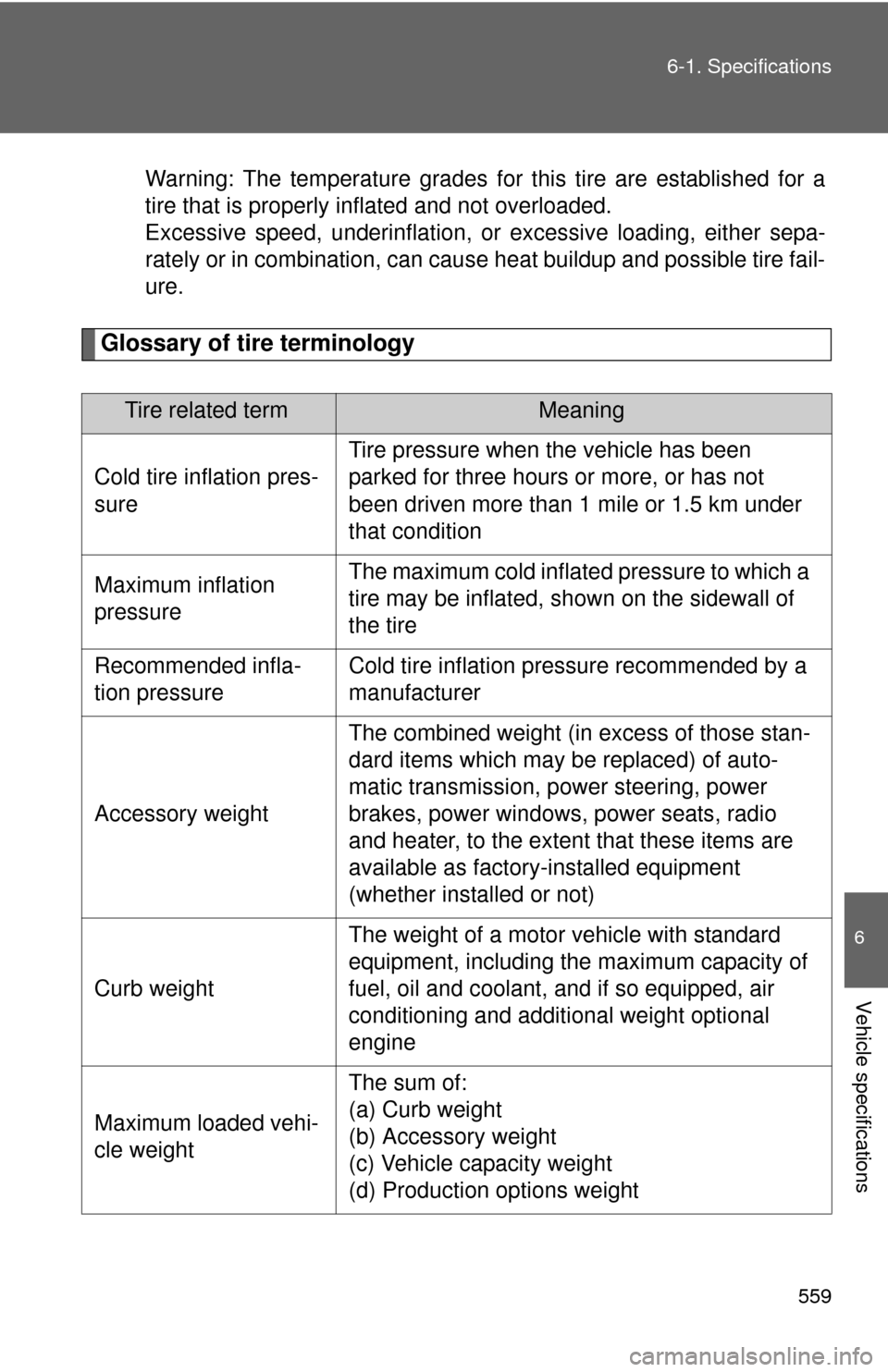Page 288 of 592
288 3-2. Using the audio system
Using the audio control function■ Changing sound quality modes
Pressing selects the mode to be changed in the following
order.
“BAS”“MID*1”“TRE”“FAD”“BAL”“SURROUND*1”“ASL”“RSE*2”
*1: Type C only
*
2: Vehicles with rear seat entertainment system
■ Adjusting sound quality and volume balance
Turning adjusts the level.
*: The sound quality level is adjusted individually in each radio mode or
CD mode.
Mode
displayedSound qual- ity modeLevelTurn to the leftTurn to the right
BAS*Bass-5 to 5
LowHighMID*
(type C only)Mid-range-5 to 5
TRE*Treble-5 to 5
FA D
Front/rear volume
balance
R7 to F7Shifts to rearShifts to front
BAL
Left/right volume
balance
L7 to R7Shifts to leftShifts to right
SURROUND (type C only)SurroundON/OFFOFFON
Page 290 of 592
290 3-2. Using the audio system
■Trademark owned by SRS Labs, Inc. (type A and B)
The audio systems utilize SRS FOCUS
and SRS TruBass audio
enhancement technologies, under license from SRS Labs, Inc., in all modes
except AM radio mode.
FOCUS, TruBass, SRS and
symbols are trademarks of SRS Labs,
Inc.
FOCUS and TruBass technologies are incorporated under license from
SRS Labs, Inc.
Page 292 of 592
292
3-2. Using the audio system
Using the steering wheel audio switches (if equipped)
Turning on the powerPress when the audio system is turned off.
The audio system can be turned off by holding down until you
hear a beep.
Some audio features can be cont rolled using the switches on the
steering wheel.
Vo l u m e
Radio: Select radio stations
CD: Select tracks, files
(MP3 and WMA) and discs
RSE: Select tracks and
chapters
Power on/off, select audio
source
Page 294 of 592
294 3-2. Using the audio system
Selecting a radio station/channel■ To select a preset station/channel
Press to select the radio mode.
Press “ ” or “ ” on to select a preset station/channel.
■ To scan for receivable stations
Press to select the radio mode.
Press and hold until you hear a beep.
Selecting a track/file■ To select one track/file at a time
Press to select the CD mode.
Press “ ” or “ ” on to select t he desired track/file.
■ To return to the beginning of the current track/file
Press to select the CD mode.
Press “ ” on .
STEP1
STEP2
STEP1
STEP2
STEP1
STEP2
STEP1
STEP2
Page 329 of 592

329
3-4. Using the hand
s-free phone system (for cellular phone)
3
Interior features
NOTICE:
This equipment has been tested and found to comply with the limits for a
Class B digital device, pursuant to Part 15 of the FCC Rules. These limits
are designed to provide reasonable protection against harmful interference
in a residential installation. This equipment generates, uses and can radiate
radio frequency energy and, if not installed and used in accordance with the
instructions, may cause harmful interference to radio communications. How-
ever, there is no guarantee that interference will not occur in a particular
installation. If this equipment does cause harmful interference to radio or
television reception, which can be determined by turning the equipment off
and on, the user is encouraged to try to correct the interference by one or
more of the following measures:
●Reorient or relocate the receiving antenna.
● Increase the separation between the equipment and receiver.
● Connect the equipment into an outlet on a circuit different from that to
which the receiver is connected.
● Consult the dealer or an experienced radio/TV technician for help.
FCC WARNING:
Changes or modifications in construction not expressly approved by the
party responsible for compliance could void the user's authority to operate
the equipment.
CAUTION:
Radio Frequency Radiation Exposure
This equipment complies with FCC radiation exposure limits set forth for
uncontrolled equipment and meets the FCC radio frequency (RF) Exposure
Guidelines in Supplement C to OET65. This equipment has very low levels
of RF energy that it deemed to comply without maximum permissive expo-
sure evaluation (MPE). But it is desirable that it should be installed and oper-
ated with at least 20 cm and more between the radiator and person’s body
(excluding extremities: hands, wrists, feet and legs).
Co-location:
This transmitter must not be co-located or operated in conjunction with any
other antenna or transmitter.
Page 511 of 592

5
When trouble arises
511
5-2. Steps to take in an emergency
■If the tire pressure warning system is inoperative
The tire pressure warning system will be disabled in the following condi-
tions:
(When the condition be
comes normal, the system will work properly.)
●If tires not equipped with tire pressure warning valves and transmit-
ters are used.
●If the ID code on the tire pressure warning valves and transmitters is
not registered in the tire pressure warning computer.
The tire pressure warning system may be disabled in the following condi-
tions:
(When the condition be comes normal, the system will work properly.)
●If electronic devices or facilities using similar radio wave frequencies
are nearby.
●If a radio set at similar frequencies is in use in the vehicle.
●If there is a lot of snow or ice on the vehicle, in particular around the
wheels or wheel housings.
●If non-genuine Toyota wheels are used. (Even if you use Toyota
wheels, the tire pressu re warning system may not work properly with
some types of tires.)
●If tire chains are used.
■If the tire pressure warning light comes on after blinking for 1
minute frequently
If the tire pressure warning light comes on after blinking for 1 minute fre-
quently when the engine switch is turned to the “ON” position, have it
checked by your Toyota dealer.
■ Customization that can be co nfigured at Toyota dealer
The vehicle speed linked seat belt reminder buzzer can be disabled.
(Customizable features P. 565) However, Toyota recommends that the
seat belt reminder buzzer be operational to alert the driver and front passen-
ger that the seat belts are not fastened.
Page 559 of 592

559
6-1. Specifications
6
Vehicle specifications
Warning: The temperature grades for this tire are established for a
tire that is properly inflated and not overloaded.
Excessive speed, underinflation, or
excessive loading, either sepa-
rately or in combination, can caus e heat buildup and possible tire fail-
ure.
Glossary of tire terminology
Tire related termMeaning
Cold tire inflation pres-
sure Tire pressure when the vehicle has been
parked for three hours or more, or has not
been driven more than 1 mile or 1.5 km under
that condition
Maximum inflation
pressure The maximum cold inflated
pressure to which a
tire may be inflated, s hown on the sidewall of
the tire
Recommended infla-
tion pressure Cold tire inflation pressure recommended by a
manufacturer
Accessory weight The combined weight (in excess of those stan-
dard items which may be replaced) of auto-
matic transmission, power steering, power
brakes, power windows, power seats, radio
and heater, to the extent that these items are
available as factory-installed equipment
(whether installed or not)
Curb weight The weight of a motor vehicle with standard
equipment, including the maximum capacity of
fuel, oil and coolant, and if so equipped, air
conditioning and additional weight optional
engine
Maximum loaded vehi-
cle weight The sum of:
(a) Curb weight
(b) Accessory weight
(c) Vehicle capacity weight
(d) Production options weight
Page 578 of 592

578
Alphabetical index
Alphabetical index
A/C ..................... 240, 246, 256, 253
ABS ........................................... 215
Air conditioning filter............... 469
Air conditioning systemAir conditioning filter .............. 469
Front automatic air conditioning system ............ 246
Front manual air conditioning system ................................ 240
Rear automatic air
conditioning system ............ 256
Rear manual air conditioning system ................................ 253
Airbags Airbag operating conditions............................ 121
Airbag precautions for your child .................................... 125
Airbag warning light............... 505
Curtain shield airbag operating
conditions............................ 121
Curtain shield airbag
precautions ......................... 125
Front passenger occupant classification system ........... 130
General airbag precautions ......................... 125
Locations of airbags .............. 118
Modification and disposal of
airbags ................................ 129
Proper driving
posture ........................ 116, 125 Side airbag operating
conditions ........................... 121
Side airbag precautions ........ 125
SRS airbags .......................... 118
Alarm......................................... 113
Antenna .................................... 268
Anti-lock brake system ........... 215
Armrest ..................................... 392
Audio input ............................... 291
Audio system A/V input adapter .................. 318
Antenna................................. 268
Audio input ............................ 291
Audio visual input .................. 318
AUX adapter ......................... 291
CD player/changer ................ 271
DVD player.... 303, 312, 315, 316
MP3/WMA disc ..................... 279
Optimal use ........................... 287
Portable music player ........... 291
Radio..................................... 265
Rear seat entertainment system ................................ 296
Steering wheel audio switch.................................. 292
Type ...................................... 262
Audio visual input.................... 318
Automatic light control system .................................... 185
Automatic transmission .......... 170
AUX adapter ............................. 291
Auxiliary box ........................... 375
A/V input adapter ..................... 318A